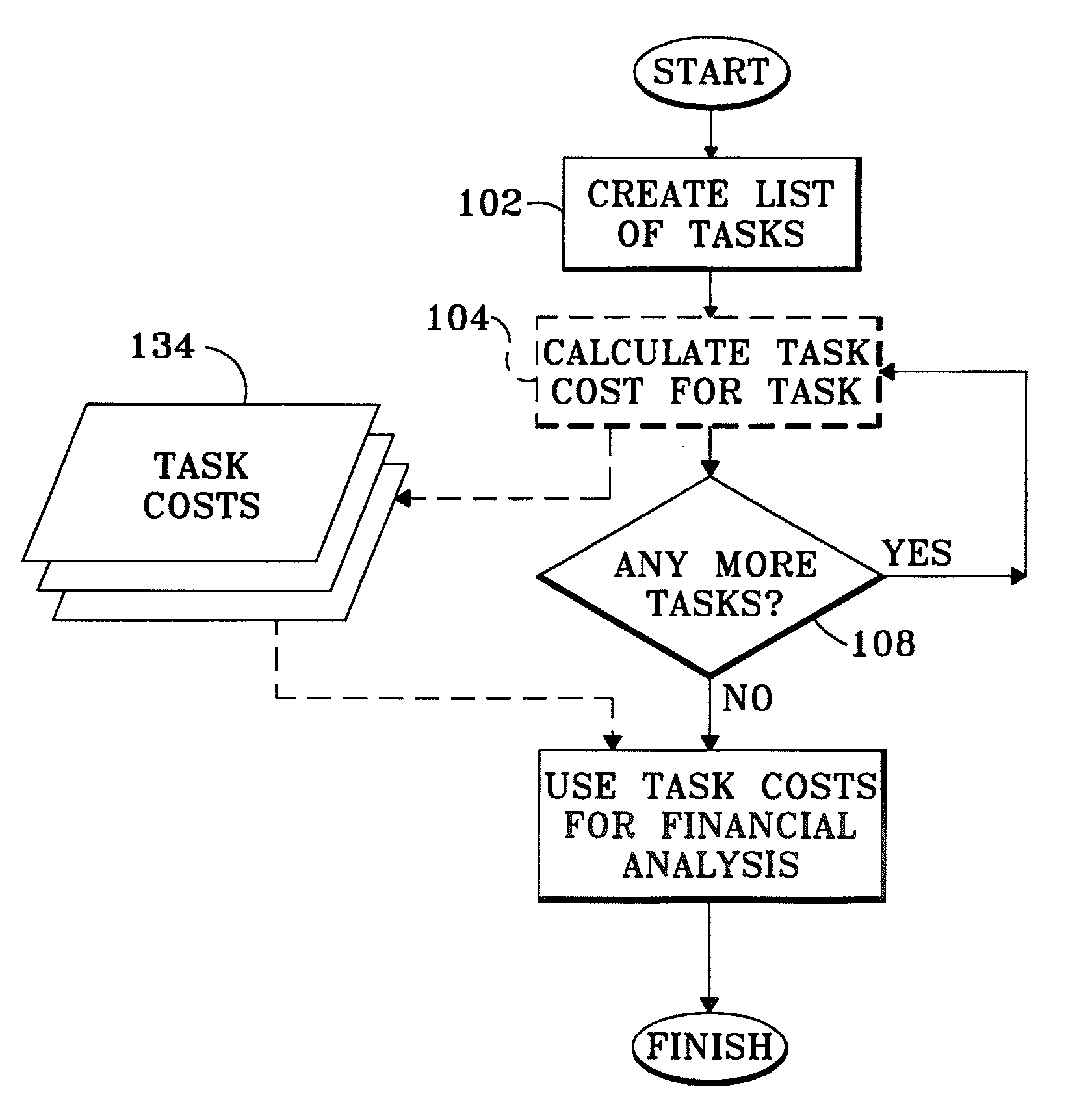Method of determining task costs for activity based costing models
a costing model and task technology, applied in the field of activity-based costing, can solve the problems of large percentage of labor costs of service business departments, inability to practice in service industries, and allocation of costs by ab
- Summary
- Abstract
- Description
- Claims
- Application Information
AI Technical Summary
Benefits of technology
Problems solved by technology
Method used
Image
Examples
Embodiment Construction
[0048]An overview of the method of a specific embodiment of the invention is shown in FIGS. 1 and 2. An overview of the method is shown as two flowcharts, with solid lines showing the flow of operation, and dashed lines showing information being generated at each stage and used at further stages in the method. For clarity, FIG. 2 shows a series of steps represented by a single box 104 in FIG. 1. As shown in FIG. 1, firstly, a list of work activities or tasks is generated (step 102). Ideally, each department in a company is asked to create an exhaustive list of all work tasks performed. The task period cost 134 is calculated for the first task (step 104). Establishing the list of tasks will usually involve establishing different revenue generating work processes and breaking them down into tasks. These tasks can be flowcharted, and a simplified example of such a set of tasks is shown in FIG. 3 for an office visit in a medical practice. The tasks can be categorized by the operator per...
PUM
 Login to View More
Login to View More Abstract
Description
Claims
Application Information
 Login to View More
Login to View More - R&D
- Intellectual Property
- Life Sciences
- Materials
- Tech Scout
- Unparalleled Data Quality
- Higher Quality Content
- 60% Fewer Hallucinations
Browse by: Latest US Patents, China's latest patents, Technical Efficacy Thesaurus, Application Domain, Technology Topic, Popular Technical Reports.
© 2025 PatSnap. All rights reserved.Legal|Privacy policy|Modern Slavery Act Transparency Statement|Sitemap|About US| Contact US: help@patsnap.com



